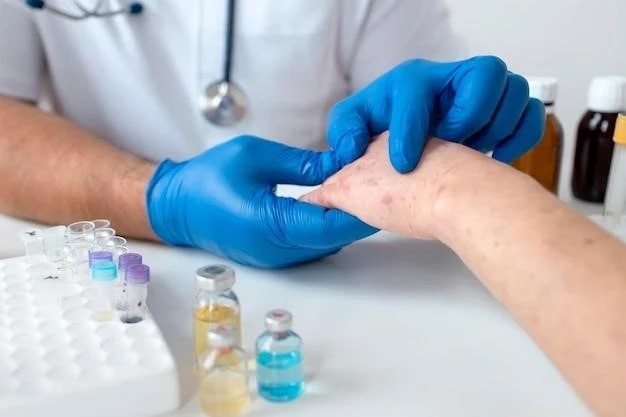Introduction to Xeroderma
Xeroderma, xerosis or xerosis cutis, is a skin condition characterized by excessively dry skin. The medical term xeroderma, meaning dry skin, derives from Greek words. In most cases, dry skin can be treated with moisturizers.
Xeroderma, also known as dry skin or xerosis cutis, is a common condition characterized by excessively dry skin. This skin issue can result in roughness, tightness, flaking, and scaling of the skin, leading to discomfort and potential skin infections. Hydration through the use of moisturizers is crucial in managing and alleviating the symptoms associated with xeroderma, promoting healthier and more comfortable skin.
Definition and Characteristics
Xeroderma, also known as dry skin or xerosis cutis, is a common condition characterized by excessively dry skin. This skin issue can result in roughness, tightness, flaking, and scaling of the skin. Hydration through the use of moisturizers is crucial in managing and alleviating the symptoms associated with xeroderma.
Etiology of Xeroderma
Xeroderma, or dry skin, may have various causes including environmental factors like cold weather and frequent bathing, as well as intrinsic factors like aging. Understanding the underlying factors contributing to xeroderma is crucial in developing an effective skincare routine to manage and alleviate its symptoms.
Symptoms and Diagnosis
The symptoms of xeroderma include rough, tight, flaky, and scaly skin, which can lead to discomfort and potential infections. Diagnosing xeroderma usually involves physical examination and assessment of skin texture. It is essential to seek medical advice for an accurate diagnosis and appropriate treatment.
Common Signs of Xeroderma
Xeroderma, or dry skin, often presents with roughness, tightness, flakiness, and scaling of the skin. These common signs can lead to discomfort and potential skin infections if not properly managed. Regular moisturization and appropriate skincare routines are essential in addressing these symptoms effectively.
Xeroderma Pigmentosum⁚ A Rare Form of Xeroderma
Xeroderma Pigmentosum (XP) is a rare genetic disorder characterized by extreme sensitivity to sunlight and an increased risk of skin cancers. This condition typically manifests in early childhood, emphasizing the importance of sun protection and regular medical monitoring.
Overview of Xeroderma Pigmentosum
Xeroderma Pigmentosum (XP) is a rare genetic disorder characterized by extreme sensitivity to sunlight, leading to a high risk of skin cancers. This condition typically presents in early childhood and requires diligent sun protection practices to prevent complications. Understanding the genetic basis and inheritance patterns of XP is essential for managing the condition effectively.
Treatment Options for Xeroderma
Xeroderma, or dry skin, can be managed effectively with regular moisturization using emollients, avoiding harsh soaps, staying hydrated, and protecting the skin from extreme temperatures. Establishing a skincare routine that includes gentle products and adequate hydration is key to improving skin condition in xeroderma.
Management Strategies for Xeroderma
Effective management of xeroderma involves consistent moisturization with emollients, avoiding harsh soaps, maintaining adequate hydration levels, and protecting the skin from extreme temperatures. Developing a tailored skincare regimen that includes gentle products and proper hydration can significantly improve skin health and alleviate dryness associated with xeroderma.
Xeroderma Pigmentosum⁚ Genetic Basis and Inheritance
Xeroderma Pigmentosum (XP) is an inherited genetic disorder associated with a decline in DNA repair capabilities, especially for UV-induced damage. Understanding the genetic basis and inheritance patterns of XP is crucial for individuals with this condition and their families.
Understanding the Genetics of Xeroderma Pigmentosum
Xeroderma Pigmentosum (XP) is a rare genetic disorder with autosomal recessive inheritance, leading to reduced DNA repair capacity, especially under UV light exposure. Knowledge of the genetic mechanisms underlying XP is vital for tailored management approaches and comprehensive patient care.

Complications Associated with Xeroderma
Xeroderma, or dry skin, can lead to complications such as cracked skin, skin infections, and discomfort. Proper hydration, gentle skincare, and avoiding harsh products can help prevent these issues and promote healthier skin.
Potential Risks and Complications
Complications associated with xeroderma include cracked skin, skin infections, and discomfort. Adequate hydration, use of gentle skincare products, and avoidance of harsh substances can help prevent complications. Routine care and moisturization are vital in managing xeroderma effectively.
Preventive Measures for Xeroderma
- Avoid harsh soaps and products that can strip moisture from the skin.
- Drink plenty of water to stay hydrated and maintain skin health.
- Use moisturizers regularly to keep the skin hydrated and prevent dryness.
- Avoid prolonged exposure to extreme temperatures that can further dry out the skin.
- Protect your skin from UV radiation by using sunscreen and wearing protective clothing.
Strategies to Prevent Xeroderma
To prevent xeroderma, it is essential to avoid harsh soaps and products that may strip the skin of moisture. Staying hydrated by drinking an adequate amount of water and using moisturizers regularly can help maintain skin health. Additionally, protecting the skin from extreme temperatures and UV radiation through the use of sunscreen and protective clothing is crucial in preventing dry skin and its associated discomfort. Establishing a skincare routine that focuses on gentle products and hydration can significantly reduce the risk of xeroderma.
Living with Xeroderma
Living with xeroderma requires a diligent skincare routine. Regular hydration, gentle products, protection from extreme temperatures, and UV radiation are essential. Follow these tips to manage xeroderma effectively and promote healthy skin.
Practical Tips for Managing Xeroderma on a Daily Basis
Managing xeroderma daily involves applying moisturizers after bathing, using humidifiers, avoiding hot showers, wearing protective clothing, staying hydrated, and incorporating gentle skincare products. Regular monitoring and adjusting your skincare routine based on skin reactions can help effectively manage xeroderma and promote skin health.

Xeroderma Pigmentosum Research and Advances
Advancements in xeroderma pigmentosum (XP) research focus on understanding DNA repair mechanisms and developing targeted therapies. Recent studies explore genetic mutations, novel treatment options, and personalized approaches to managing XP. Staying informed about the latest developments in XP research is crucial for individuals with this condition and healthcare providers.
Recent Developments in XP Research
Recent research in Xeroderma Pigmentosum (XP) has focused on exploring advanced DNA repair mechanisms, genetic mutations associated with XP, targeted therapies, and personalized treatment approaches. Stay updated on the latest findings to better understand and manage XP effectively.
